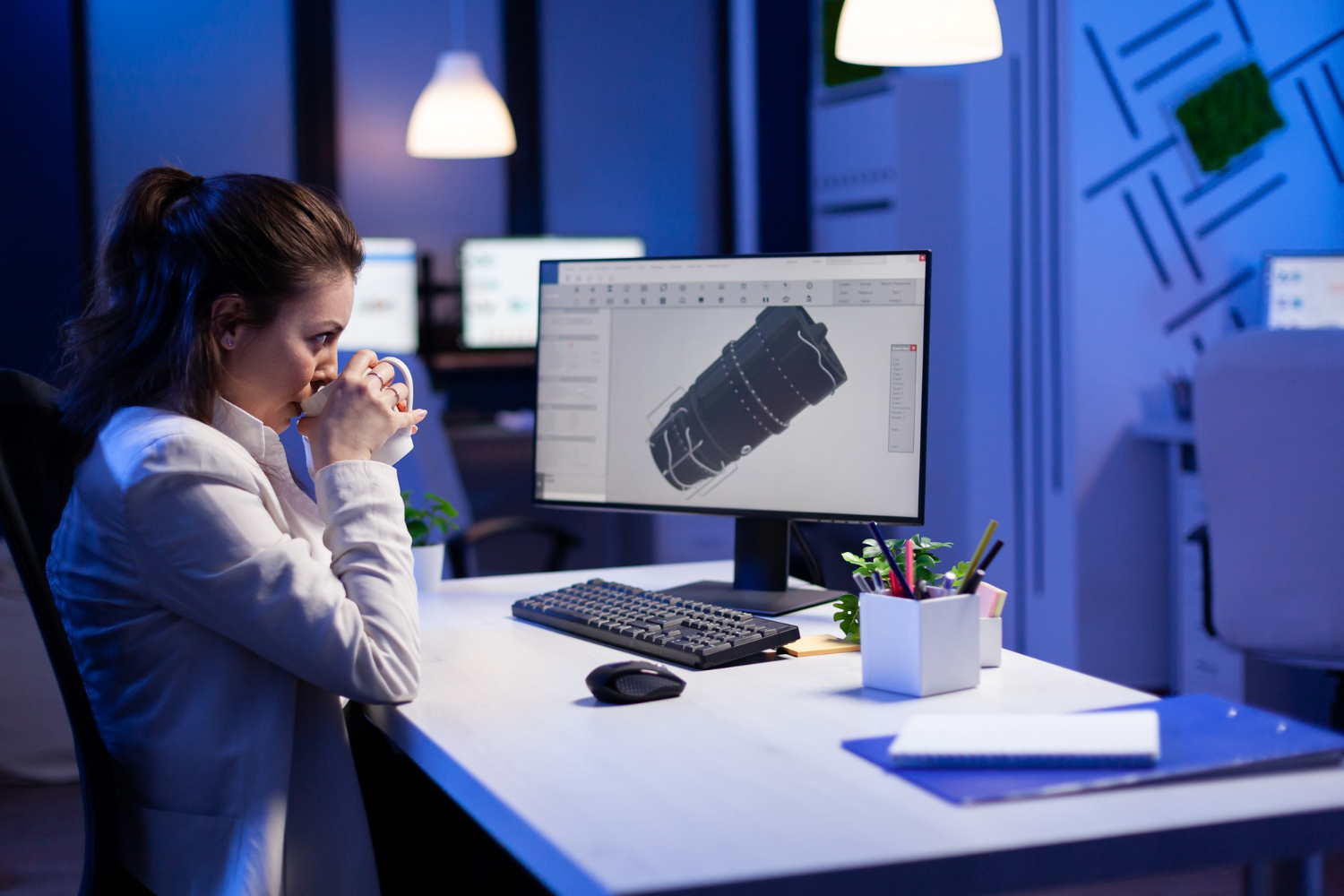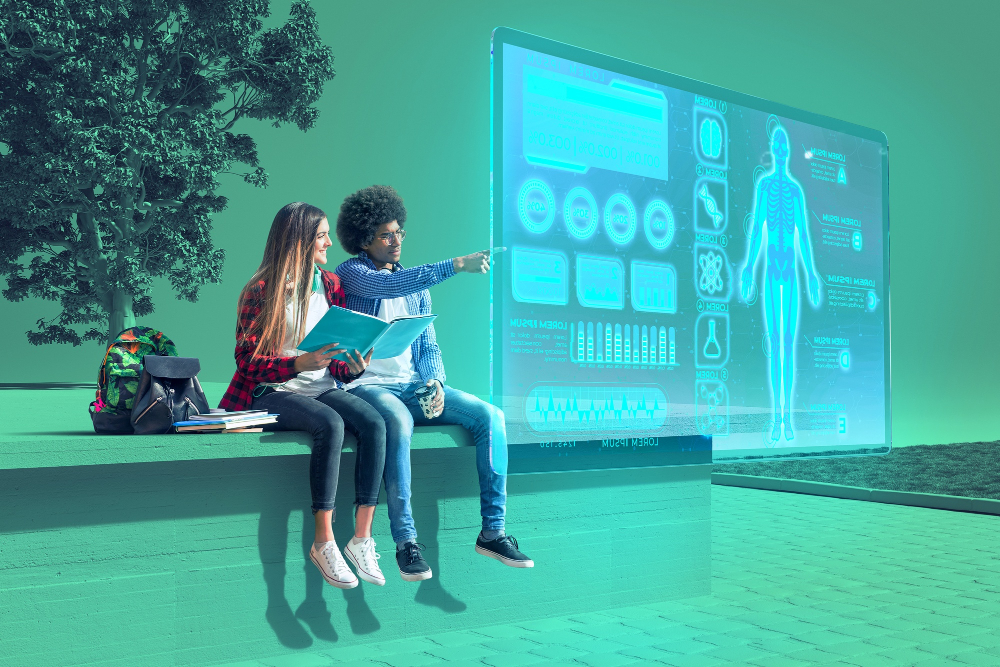Introduction of 3D Printing
3D printing, also known as additive manufacturing, has been hailed as the next industrial revolution. It allows objects to be created from digital files by building up layers of materials like plastic, metal or concrete. In recent years, 3D printing has gone mainstream with cheaper consumer-level machines and new applications emerging across industries. This technology enables on-demand, customized fabrication with complexity and precision impossible using traditional methods.
In this extensive blog, we will do a deep dive into how 3D printing technology works and analyze its transformative impact on manufacturing processes, business models and the economy. We will examine key 3D printing applications across major industries, benefits ranging from sustainability to innovation, as well as limitations and challenges holding back adoption.
How 3D Printing Works
3D printing refers to various processes that build physical objects by depositing material layer-by-layer from a digital 3D model. A 3D printer reads the design file containing 3D object data and lays down successive layers of material until the object is formed.
Several different 3D printing technologies exist, but they all share the same additive approach of creating objects layer-by-layer in contrast to subtractive methods like machining. The various 3D printing methods differ in how layers are built and what materials they use. The most common technologies include:
- Fused Deposition Modeling (FDM) – One of the most affordable and accessible forms of 3D printing. FDM uses a thermoplastic filament, which is heated to a semi-liquid state and then extruded from the print head nozzle to form layers. Most desktop 3D printers use FDM technology.
- Stereolithography (SLA) – A resin-based 3D printing process where ultraviolet lasers are used to selectively cure and solidify photosensitive liquid resin layer-by-layer. SLA produces high detail and smooth surface finish parts.
- Selective Laser Sintering (SLS) – Uses a laser to fuse and bond powdered material like nylon, thermoplastic or metal powders into a solid part. Excess powder serves as support during printing and can be reused.
- Electron Beam Melting (EBM) – Uses an electron beam in a vacuum environment to selectively melt metal powders layer-by-layer. This builds dense, void-free metal parts for aerospace and medical implants.
- Bound Metal Deposition (BMD) – Deposits bound metal granules layerwise and sinters them with heat to build near net-shape metal components with good structural integrity.
Other emerging 3D printing methods include inkjet 3D printing using photopolymer droplets and 3D bioprinting of biological tissues and cells. Material extrusion and photo-polymerization are the most common approaches used in affordable desktop 3D printers today.
Democratizing Manufacturing
One of the biggest impacts of 3D printing is that it democratizes manufacturing capability by enabling more decentralized production. Conventional manufacturing relies on economies of scale – producing large volumes efficiently in centralized plants requires huge investment in specialized machinery and labor. This structure creates distance between designers and production, lengthy prototyping times and limited flexibility.
3D printing removes many of these barriers with affordable desktop printers capable of producing end-use products. Designs can be shared digitally and printed on-demand locally. This allows localized production that is customized and responsive to consumer needs. Small businesses can manufacture products without large scale investments in production lines and infrastructure. Even home-based micro-factories leveraging 3D printing are emerging.
With 3D printers getting cheaper and more ubiquitous, production capacity is dispersing. According to Deloitte, over 5 million desktop 3D printers were sold worldwide by 2020. This distributed manufacturing capacity will disrupt traditional value chains and business models. Logistics giants like UPS and Amazon are already setting up 3D printing labs and services to decentralize production.
Rapid Prototyping and Innovation
3D printing accelerates product development by allowing rapid prototyping without expensive tooling, molds or special machinery. Design ideas can be quickly ideated, prototyped and validated, enabling faster iteration. This fail fast product development approach helps bring better products to market faster by identifying flaws early on.
Amateur designers, startups and crowdfunded ventures can build and test prototypes rapidly without major investments. 3D printing enables ‘designer-manufacturer’ capabilities once exclusive to large firms. The ease of experimentation also fosters distributed innovation. Thousands of hobbyists, makers, engineers and everyday people can design new products using affordable 3D printers.
Open source communities like Thingiverse share 3D printable designs for everything from toys, tools to even humanitarian relief products freely. 3D printing service platforms like Shapeways have triggered new user-led innovation ecosystems and business models. According to a Deloitte survey, 77% of manufacturers believe 3D printing increases speed to market, while 70% say it reduces development and prototyping costs.
Customization at Scale
3D printing enables mass customization – producing personalized or tailored products at mass production economies of scale. With conventional methods, unique customer needs could only be met via made-to-order custom manufacturing at higher costs. With 3D printing, each unit coming off the assembly line can be customized for individual requirements without expensive retooling.
From customized prosthetics and orthodontics in healthcare to tailored apparel and footwear, 3D printing allows bespoke design at competitive prices. Companies leverage 3D printing to provide unique accessories, gifts and collectibles to customers. The automotive sector uses 3D printed sand molds and tooling to enable personalized car designs. 3D printing makes build-to-order business models cost-effective.
Complex and Optimized Design
Additive manufacturing with 3D printing also enables complex geometries impossible with conventional machining methods. The precise layer-by-layer positioning provides flexibility and complexity beyond production constraints of traditional techniques. 3D printing can fabricate intricate shapes with internal voids and lattice structures that minimize weight while retaining strength. This enables parts optimized for functionality, energy efficiency and sustainability.
Medical devices like orthopedic implants can be printed to precisely fit patient anatomy rather than generic sizes. Heat exchangers, turbocharger housings, aircraft components etc. can be printed with topology optimized shapes and passages for fluid flow or cooling not possible with machining. 3D printing removes barriers of design complexity, allowing innovations not feasible with conventional manufacturing.
Hybrid Manufacturing
Rather than replacing traditional methods, 3D printing is also integrating with conventional techniques to create hybrid manufacturing systems. Subtractive manufacturing can improve surface finish and tolerance of near net-shape 3D printed parts. Embedded electronics and sensors can augment 3D printed objects during printing or post-processing. Hybrid manufacturing combining 3D printing with robotics, AI and IoT enables digital agility and flexible production.
According to Deloitte, the global hybrid manufacturing market will reach over $75 billion by 2026. Hybrid manufacturing leverage strengths of additive and conventional processes for production efficiency and customization. It lowers 3D printing limitations around surface finish, material strengths and accuracy. 3D printing expands capabilities of CNC machining and injection molding. Combining these technologies can lead to smarter and more connected factories.
Benefits Across Industries
3D printing is transforming manufacturing across sectors from aerospace and healthcare to consumer products and automotive. Here are some of the impacts and use cases:
Aerospace – Aircraft manufacturers like Boeing, GE and Airbus use 3D printing to produce lightweight and complex aircraft components that are stronger and more heat resistant. This lowered Boeing Dreamliner’s weight by 30% vs. traditional manufacturing. Spare parts can be printed on-demand.
Healthcare – 3D printing is revolutionizing medical device production from prosthetics tailored to patient anatomy to printable implants, organs and biosensors. Dental aligners and customized implants are going mainstream. Hearing aids and orthotic insoles are being 3D printed.
Automotive – Automakers like BMW and Ford use 3D printing for quicker prototyping and rapid tooling. Low volume production of customized car components for concept vehicles and racing has begun. The prospects of printing entire cars on demand is also emerging.
Retail – Retailers like Nike and Adidas are piloting small batch 3D printed manufacturing to offer personalized footwear based on biomechanics and measurements. On-demand fabrication can also produce spare parts to repair consumer appliances.
Food – 3D printing technology can construct complex chocolate shapes and geometries for confectioners. Researchers are also experimenting with printable nutrition bars and meat alternatives made from proteins.
Construction – Concrete 3D printing allows developing customized architectural shapes and ornamentation otherwise not viable with molds. On-site printing eliminates transport costs and can automate construction of low-cost housing.
Oil & Gas – Topology optimized and lightweight components 3D printed from exotic alloys withstand high temperature and pressures for extraction under challenging conditions like deep sea drilling.
On-Demand and Localized Production
Traditional manufacturing needs economies of scale for efficiency, leading to mass production in few centralized plants. 3D printing enables a shift to localized and on-demand production. With distributed 3D printer capacity, goods can be produced near or at point of consumption. 3D printable designs can also be sold online for home printing. This can greatly shorten supply chains and enable response to unique locale needs.
Spare parts for appliances and vehicles can be printed locally on demand instead of stocking inventories across geographies. Rather than waiting for shipment from factories, products can be made at retail outlets. Localized production also aids humanitarian efforts. Printing modular shelters, water pipes, prosthetics etc. on-site using mobile labs can support disaster relief and rural access.
Companies are already providing 3D printing micro-factories in shipping containers to deploy production anywhere. With global ecommerce networks, these mini-factories can make goods and easily integrate into online retail and delivery logistics. This marks a fundamental shift from centralized mass production.
Sustainability Benefits
3D printing offers sustainability benefits compared to conventional techniques in certain applications. As an additive process, it produces less material waste than machining where material is subtracted from a block. 3D printing builds objects layer by layer only using required material, reducing leftover scrap. Studies estimate 3D printing can lower material waste by up to 90% for certain small part designs.
With on-demand printing, overproduction and product obsolescence are also minimized. Inventory and spare part needs can be reduced by 3D printing as needed. Product light weighting through optimized geometries cuts emissions over lifecycles. When combined with renewable energy, 3D printing can produce customized goods with a lighter environmental impact.
However, sustainability benefits depend on part size, production volume and whether renewable energy powers the printers. Larger parts and series production via injection molding is often still more eco-efficient than 3D printing. Most commercial 3D printers still use non-renewable electricity further limiting environmental impact. The technology is continuing to evolve on these aspects.
Limitations and Challenges
While promising, 3D printing still has many technical and economic limitations that curb more widespread business adoption beyond prototyping. Printer costs, though falling, remain high for enterprise use cases. The number of materials available is also limited compared to conventional manufacturing processes. Metal 3D printing is costlier than machining for production volumes.
Printing speed is often slower, especially for large parts. Achievable quality, precision, surface finish and mechanical properties lag traditional techniques thus restricting applications. Support structures used in printing can leave behind wasteful residue requiring cleanup. Limited quality assurance and certification protocols also deter regulated sectors like aerospace from adoption.
The distributed nature of 3D printing gives rise to challenges around intellectual property infringement and regulation. As digital files are easier to illegally modify or reproduce than physical products, piracy is a concern. Unvetted 3D printable medical devices or firearms also pose risks. These factors remain barriers inhibiting business adoption.
Conclusion
3D printing is opening new frontiers in manufacturing customization, product development and local production. But it is more likely to complement rather than fully replace conventional high-volume manufacturing in the near future. While 3D printing makes digital on-demand fabrication a reality, it remains better suited for prototyping and low volume production currently.
The value of 3D printing lies in its ability to permit designs and applications impossible with traditional techniques. As the technology continues advancing in speed, costs, quality and materials, wider adoption is expected across industries. But uncertainties around long-term business models, digital piracy and decentralized production imply 3D printing remains a technology in transition.
With exponential growth anticipated in the years ahead, 3D printing will become a more mainstream manufacturing process integrated into production pipelines. Hybrid manufacturing combining additive and conventional methods may hold the most potential. With recent advances in multi-material printing, embedded electronics and nanoscale precision, 3D printing is poised to usher the next generation of manufacturing.




